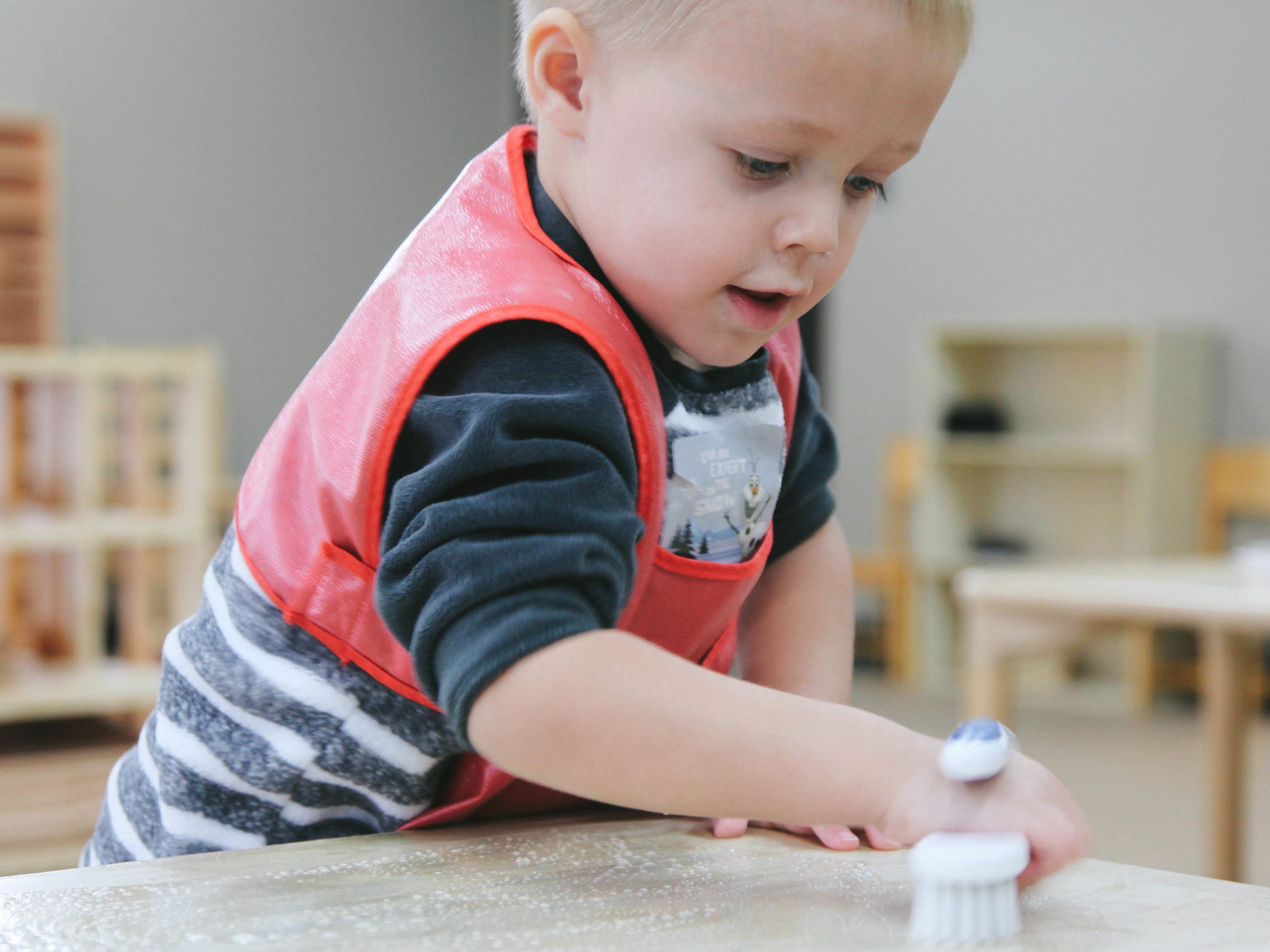The Absorbent Mind
Thoughts & Reflections
We’ve all had that feeling when everything just falls into place, when something is crystal clear, when there’s such a beautiful example of something that it kind of knocks you back. We had a moment like this recently, and happily we were able to photograph it, too.
Maria Montessori writes about the Absorbent Mind, and she wrote a book with the same title. In a short definition, children are taking everything in, all at once, and absorbing it. She writes, “The things he sees are not just remembered; they form a part of his soul.” They don’t need instruction on speaking, or a lecture on walking, or to read pages 80-201 before they’re ready to try feeding themselves, they watch, they absorb, they try try try.
“The things he sees are not just remembered; they form a part of his soul.”
One of the qualities of the Absorbent Mind is that it doesn’t discriminate. We have to take everything in, then we experiment with what is necessary in order to complete a task. We’re largely unaware of this, but it’s constant trying until a child figures out which are the precise movements and in which order to achieve the desired result.
Sometimes a child will attach to something that isn’t part of the necessary skill, and we can see the Absorbent Mind at work. While we know, that’s just a step along the path, a child takes it all in, and for some reason this certain aspect stands strong in their mind.

A child was learning bead stringing. Beads often just look like blocks, until, oh look! A hole! This string goes in and then… there it is! It’s also a bit of object permanence, in that the string hasn’t disappeared, it went through the seemingly solid object by means of this hole.
So, we peer through the hole. This is just part of the lesson, a guide to help a child be successful in finding that hole to achieve the real goal, stringing the beads.
This child immediately picked up the bead and looked through it. And proceeded to peer through each of the other 11 beads available for stringing. No stringing happened. This was enough. Look through this one. And this one! Does this one still have a hole? Oh it does!
It would be easy to correct. That’s not the point, the point is to string the beads, now that you see it has a hole put it on the string. This trial and error, though, really is the point! How does a child learn which tasks are necessary in order to be successful? Which sounds to put in which order, how to control their mouth movements and their breath in order to create speech? Which wobbles turn into falling over, and which are the basis of walking? Experimenting, failing, trying again. This is the basis of a child trusting their own instincts, their own abilities.
It’s okay. You’ll figure out how to put the beads on the string another day. Your curiosity is captivating.
Written by:
Charlotte Snyder



